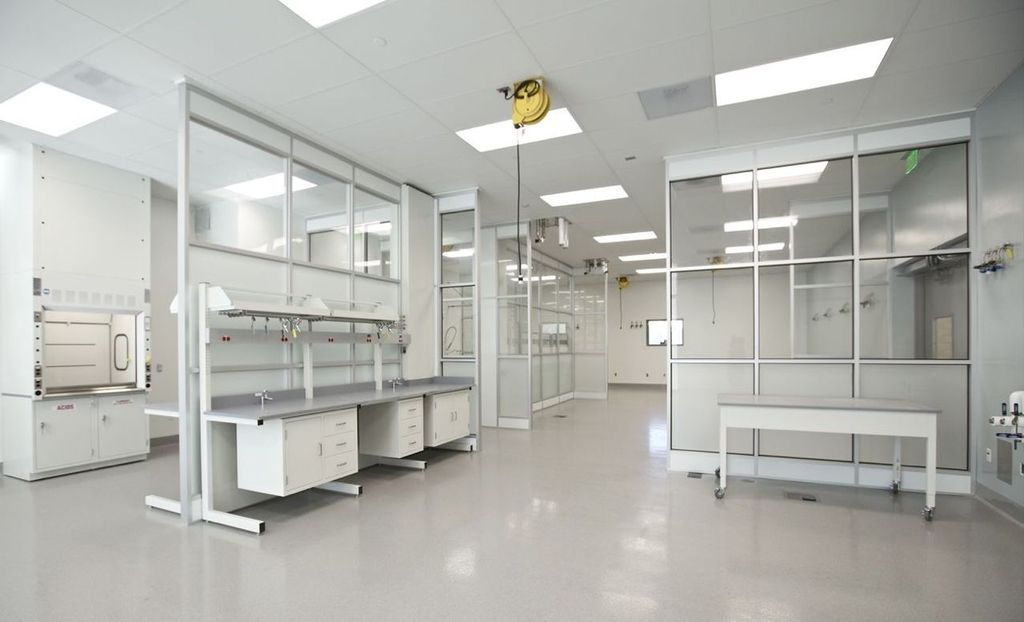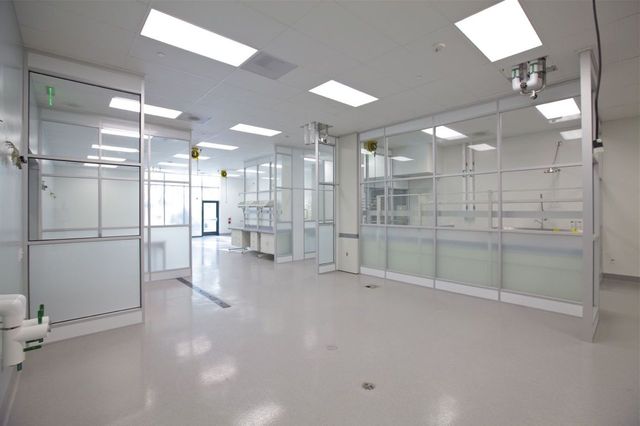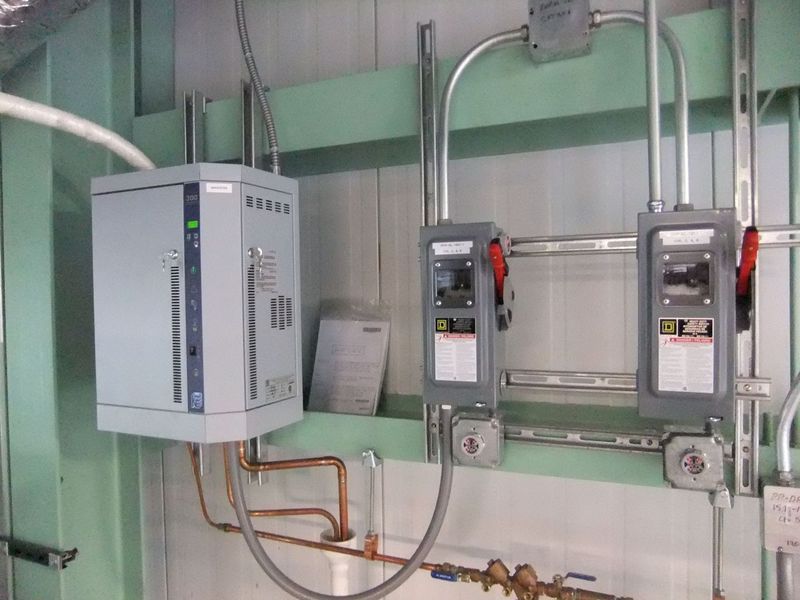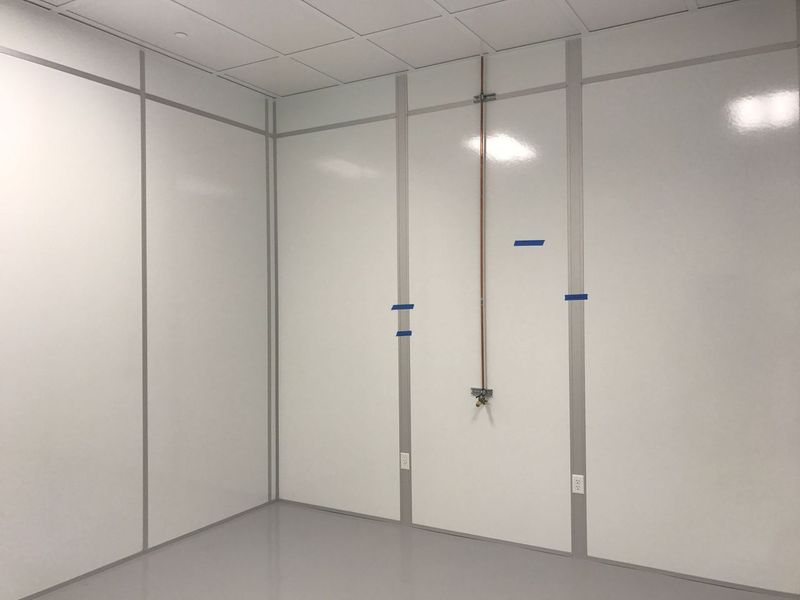
02 May What are Pharmaceutical Cleanrooms? The Ultimate Guide
Given that almost everyone has had to rely on medicines at some point, the importance of manufacturing safe drugs for public use is self-evident. This is where pharmaceutical cleanrooms come in, as they play a huge role in making sure medicines are safe. Let’s take a closer look at what these environments are, how they protect our medicines, and explore some of their design features.
What are Pharmaceutical Cleanrooms?
Pharmaceutical cleanrooms are carefully designed controlled environments for drug manufacturing. These cleanrooms are necessary to prevent the contamination of products by both viable and non-viable particles. To achieve this, they incorporate various features and follow strict standards outlined by the FDA. As a consequence, they must be sterile and maintain extremely high cleanliness standards. Generally, pharmaceutical cleanrooms are ISO 5 for aseptic filling and sterile processes, while less critical areas are typically ISO 6 or ISO 7.

Basic Features
Pharmaceutical cleanrooms have a variety of features to ensure that drugs are made safely and without any contaminants. Here are a few of the most important aspects:
- HEPA and ULPA filters: These high-tech filters trap tiny particles and help regulate air quality. HEPA filters trap 99.97% of particles 0.3 micrometers or larger. Similarly, UPLA filters stop 99.99% of particles 0.12 micrometers or larger.
- Climate control systems: These systems manage air temperature, humidity, pressure, and more.
- Special materials for surfaces: Special materials are needed to make non-porous, easy-to-clean surfaces. Cracks in the floors or walls can create places where particles can accumulate or where organisms can grow. As a result, walls and ceilings are usually finished with epoxy or polyurethane. Stainless steel guards protect critical areas, and floors are often made of seamless vinyl or epoxy.
- Chemical-resistant flooring: The flooring in pharmaceutical cleanrooms must not be corroded or damaged by cleaning agents. This will minimize joints and cracks where contamination could get stuck and cause bacterial growth.

Standards and Regulations
In the United States, pharmaceutical cleanrooms must comply with Current Good Manufacturing Practice (cGMP) standards, which include Good Manufacturing Practice (GMP) regulations, both enforced by the FDA.
cGMP focuses on five key elements, often referred to as the 5 P’s: people, premises, processes, products, and procedures.
As a result, cGMP regulations in pharmaceutical cleanrooms involve monitoring environmental conditions, checking for any microbial contamination, and keeping records of all cleaning and maintenance activities.
This comprehensive approach helps control all aspects of production and keeps medicines safe, consistent, and high quality.
Design and Construction
Constructing a pharmaceutical cleanroom involves careful planning in order to reach compliance. Here are a few design considerations:
- Layouts must minimize cross-contamination by controlling the flow of materials and people.
- Many of these cleanrooms have modular designs, as they can be adapted to changing needs without heavy downtime or costs.
- Airflow management is paramount, so cleanrooms often use unidirectional airflow and high air change rates to continuously remove particles.
Operational Protocols and Maintenance
Operating a cleanroom requires strict cleaning protocols and regular maintenance to keep the environment within the proper standards. Here are some common protocols:
- Routine cleaning with approved substances that do not break down materials or surfaces.
- Personnel training on gowning and behavior to reduce human-caused contamination.
- Regular equipment checks to show that filtration and climate control systems function properly.
- Regular testing is important for both viable and non-viable contaminants. Viable particles are tested using settling plates, while non-viable particles are measured with laser particle counters.
Challenges & Solutions in Operating Pharmaceutical Cleanrooms
Managing these cleanrooms presents serious obstacles, like maintaining strict standards while also managing costs. Some high-tech solutions include:
- Using automation as much as possible to reduce human-borne contamination.
- Employing real-time monitoring systems that can detect deviations in environmental conditions (which can then quickly be corrected).
- Embracing modular cleanroom designs can ease the challenges that arise from pharmaceutical manufacturing. Allied Cleanrooms provides modular systems that are quick to install and easily adaptable. For more information on how modular solutions can meet your specific requirements, contact Allied Cleanrooms for a free quote.

The Bottom Line
Cleanrooms safeguard pharmaceutical industry products through strict standards, special design considerations, and advanced technology. Pharmaceutical cleanrooms aren’t only sterile rooms; they’re the backbone of trust and reliability in drug production.

